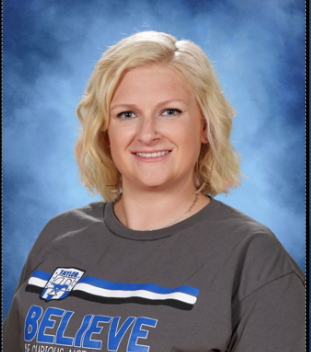BRI Scholarship Recipient Promotes Missing Voices In Social Studies
By Mary DiFiore-Smith
When I graduated from Sam Houston State University, I was chomping at the bit to be a history teacher. I was ready to teach students that history does matter, and we need not only tell the stories but also lessons learned, to keep from repeating the past.
The theme for this year's National Council for the Social Studies conference and so many sessions therein led me to think more about my “why” and how I was actually helping students if they couldn’t see themselves in history. How much have we really learned from our past? Students are sitting in my classroom, 12 years later, seeing the similarities between FDR and LBJ, the Civil Rights Movement of the 1960s and 1970s to the Civil Rights movements of today, America's evolution, and views on the Vietnam War and the War on Terror. Why doesn’t our history prevent us from making similar mistakes in our present?
As social studies teachers, we carry the profound responsibility of telling as many stories as possible — especially the hard ones. Attending conferences often renews our purpose and equips us with fresh strategies, perspectives, and voices. In an era where American exceptionalism is on the rise, our role isn’t to glorify America’s superiority but to reveal its complexity. What should make America exceptional is our commitment to telling all the stories — not just the ones to be celebrated.
We must challenge our students to think critically: What do we currently celebrate about our history? What mistakes has America made? What have we learned? What continues to repeat because we haven’t learned enough?
Historical empathy is key to understanding and righting past wrongs. For instance, teaching about the Vietnam War shouldn’t stop with American protests or veterans’ experiences. We need to include the voices of the Vietnamese people who endured unimaginable suffering or the women deployed to Vietnam who were empowered overseas, but came back home to a country that will deny their service.
America’s unique position on the homefront — fighting wars without experiencing them directly — creates a narrative gap. Filling that gap with diverse perspectives enriches the story and helps students grasp the full scope of history. It leads you to wonder how many other events do we teach where those same narrative gaps exist.
To borrow from Ken Burns in closing, there’s the U.S. and there’s us. There is no “them.” We, as Americans, are the story, and ALL of our stories deserve to be heard. We are doing our students a disservice by not acknowledging or discussing as many points of view as possible in the classroom.
So, as you pull primary sources for your lessons, consider the narrative. Whose voice is missing? Whose perspective will challenge students to see themselves in history, to think critically, and to build empathy? These untold stories matter more than ever. They’re the connections that make our courses meaningful and our students informed citizens.
Mary DiFiore-Smith teaches U.S. History and AP Social Studies at James E. Taylor High School in Katy, TX. She is also a recipient of the Bill of Rights Institute's Gary Colletti Conference Scholarship.
